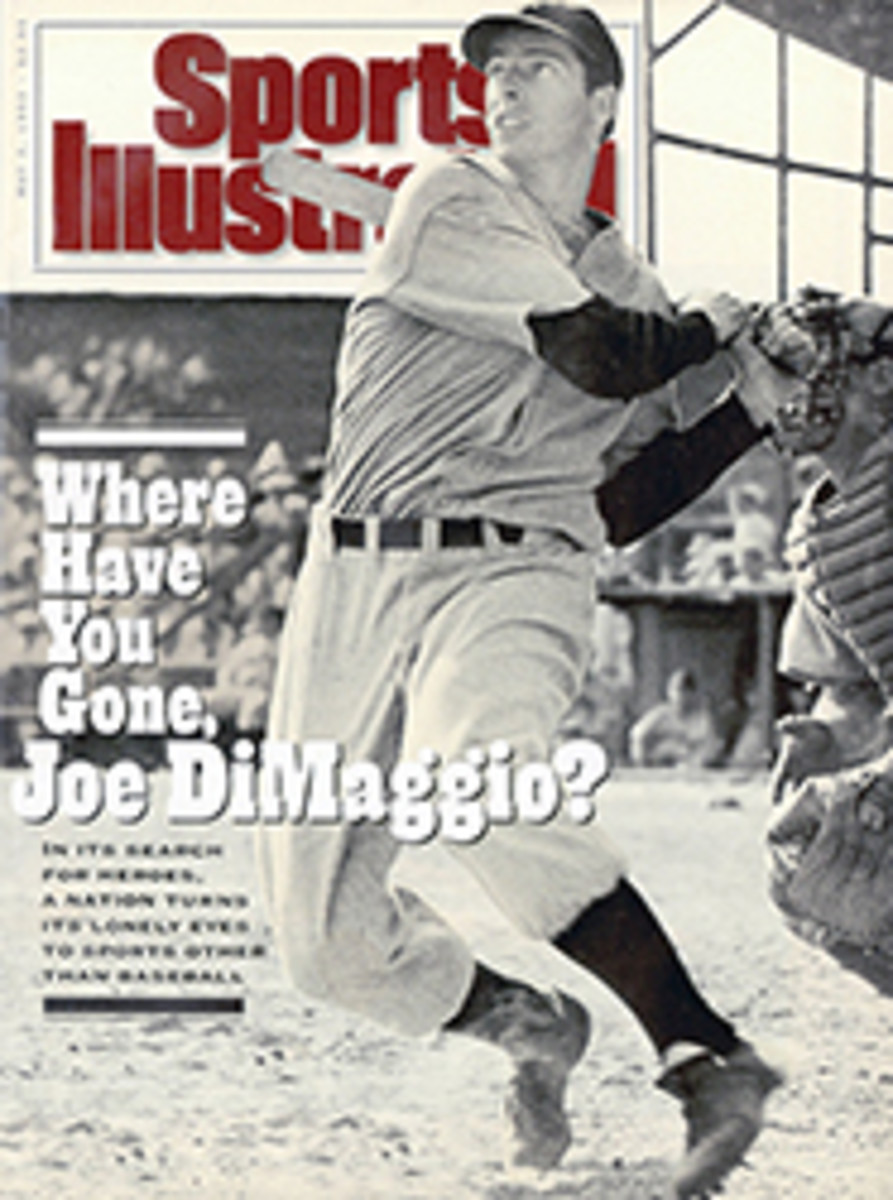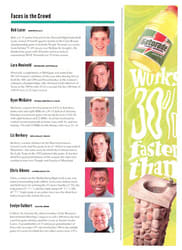
Learning to Live with Nature
San Bruno Mountain was kind of a metaphor for everything," Gordon Ashby says. "It's just below San Francisco, and the landscape has a very sensuous quality to it. The hills are rounded smooth, and soft. It's very large. You can see it from many parts of the city." But in the early '70s, he says, "developers wanted to put luxury housing on the mountain."
Ashby is an emotional man, and when he grows angry—which happens frequently—his blue eyes turn glacier-gray. When he heard that developers were interested in San Bruno Mountain, he became furious. After living in Los Angeles for 20 years, he had fled the area in 1963 for San Francisco because the Southern California "paradise" of orange orchards and flower beds had become, in his eyes, paved over with concrete and people. Now it was happening in Northern California, too. "I'm not an advocate of returning the planet to what it used to be," says the 59-year-old Ashby. "You've got to deal with what you've got and manage it."
One of this country's most innovative museum designers, he began casting about in 1971 for a way to teach Northern Californians about their deteriorating environment. Ashby, who designed the Oakland Museum, the Cincinnati Science Center and the California Historical Society in Los Angeles, found what he was looking for only a stone's throw from San Bruno Mountain. Established in 1954, the Coyote Point Museum in San Mateo, 20 miles south of San Francisco, was a small children's museum that featured natural history exhibits and live animals. Parents took their kids there on weekends to see deer and raccoon. In 1973, however, when Coyote Point decided it wanted to broaden its appeal to include adults as well as children, Ashby was asked by the museum's trustees to come up with a proposal for an institution whose time had surely come: an environmental museum and ecological-education center.
"The theme is living with nature," Ashby says of the Coyote Point Museum for Environmental Education, this country's first environmental museum. Opened in 1981, the museum is designed to encourage people to think of themselves as a part of nature, as beings who have a direct and serious impact on their environment. The museum's mission is evident from the moment a visitor enters the large wooden building and sees a sign with a paraphrase of Thoreau: "What is the use of a house if you don't have a decent planet to put it on?"
After reading the sign, a visitor will immediately spot a striking mural by Brian Carter, a local artist. At the mural's center is the sun; directly to its right and proceeding outward is the depiction of the history of the universe. The paintings in this series illustrate the last 15 billion years, from the Big Bang through the development of DNA to the first hominids to Homo sapiens. A sign on a mirror at the far right edge of the mural speaks to the visitor: "This Animal is You!...Do you have a responsibility to life? Can you save yourself?"
Complementing the cosmological mural is a San Mateo County mural charting the course of human existence in the Bay Area. It begins in 600 A.D., with the Ohlones, the indigenous Indians, and ends with the arrival of the Europeans, many of whom were bent on logging, gold mining, developing the land—activities that eventually resulted in rampant waste and pollution. "It takes your own backyard and uses it as a story to understand the earth," says the museum's director, Linda Liebes. "Everybody's worried about tropical rain forests, but if we save our own forests first, we'd be doing well."
San Mateo County is a particularly good site for this museum because within its 454-square-mile area there is a variety of topography, from San Francisco Bay's salt marshes to the Douglas fir forests atop the Santa Cruz Mountains. Ashby designed the main part of the museum to replicate six primary local ecological communities. He set the exhibition space on three levels: The higher-altitude coniferous and broadleaf forests are on the top level, the grasslands and chaparral are one ramp down, and the baylands and coast are at ground level.
It took Ashby, nature writer Bill Broder (who wrote the "story lines" that accompany the displays), and a team of artists and designers nearly 10 years to complete Coyote Point, a museum rich in detail. In its exhibits ecological science is brought to life through literature, paintings, photographs and even an assortment of computer games designed by Stanford students. In the coniferous forest, for instance, a visitor can read about photosynthesis and try out an interactive game in which the goal is to arrange a tree's limbs to absorb the most sunlight. One can learn about the depletion of American forests over the centuries and then play a computer game that is won by demonstrating a knowledge of sensible logging techniques and by helping Freddy the Forester replant a mountainside.
In the broadleaf-forest section a live ant colony is hard at work in an elaborate system of tunnels. An oak tree is divided into apartment blocks to show how 19 different species of bird—from California quail to brown creepers to red-tailed hawks—can make their homes in the tree. Nearby is a real wood rat's nest, a honeybee hive that hums with the sound of vibrating wings and a colony of termites well on its way to polishing off a thick cross section of an oak tree.
In the grasslands area there is information about the food chain and predator-prey relationships. This exhibit's centerpiece is a massive pyramid designed to show visitors a portion of a hawk's total annual consumption of 1,069 mice, 98 small birds, 20 gophers, 18 rabbits, 15 squirrels, 15 shrews, nine game birds, seven snakes, four rats and two weasels. Above the pile, 20 feet in the air, flies a red-tailed hawk, a snake clutched in its talons. "I am not ashamed of the wren's murders/Nor the badger's dinners/On which all worldly good depends/If I were not human I would not be ashamed of anything," reads a nearby placard, quoting poet W.S. Merwin.
Also on the second level is an interactive game called Take a Big Mac Apart, which challenges a participant to match the ingredients of a fast-food hamburger with their sources on the farm, part of an exhibit that deals with the impact of agriculture on the environment. On this level too are a number of exhibits that focus on the erosion of hillsides, global warming, toxic waste and an exploding human population.
Down in the baylands, the borderland between land and ocean, a boardwalk winds between two models of mud flats. The healthy mud flat on the left is freckled with ghost shrimp holes and clam mounds. The mud flat on the right is heaped with rubbish. "When the productivity of the baylands decreases, so does the life of mankind," warns a sign. Visitors are encouraged to dispose of their litter properly, to recycle and to resist the overdevelopment of marsh areas; San Francisco Bay today is roughly half the size it was 150 years ago.
Near the exit, in the coastal display, there's a 600-gallon tank that demonstrates what happens to the ocean when factories dump sludge through underwater pipes. It's not a pretty sight. There are also whale displays, notes on cliff-dwelling birds and a sandy-beach diorama that effectively underscores the severity of the environmental problems the museum addresses. The beach is meant to look as though visitors leaving it have left the sand littered with soda cans and candy wrappers.
More than 100,000 visitors walk through the Environmental Education Museum each year, and Liebes is used to people bolting into her office after a tour to exclaim, "I've got to try and do something to save the earth!" Besides presenting the exhibits, Coyote Point also sponsors seminars for grade school and high school teachers, offers a range of programs for schoolchildren and sells banana-slug T-shirts in its gift shop.
Ashby is pleased with the museum, and he has reason to be. "Some of the text might seem less poignant than it did 12 years ago," he says. "That's because we've accomplished what we set out to do—making people realize how much messing up they do."
The museum, which is 10 minutes south of San Francisco Airport, off Highway 101 at Coyote Point Park, is open Tuesday through Saturday from 10:00 to 5:00 and on Sunday from 12:00 to 5:00. Admission is $3 for adults, $1 for those under 18.
PHOTO
ANDY FREEBERG
Alarmed by overdevelopment, Ashby designed a museum on ecology.
PHOTO
ANDY FREEBERG
Beneath models of gray whales, students read about the mammals' yearly migration from Baja California to Alaska.

